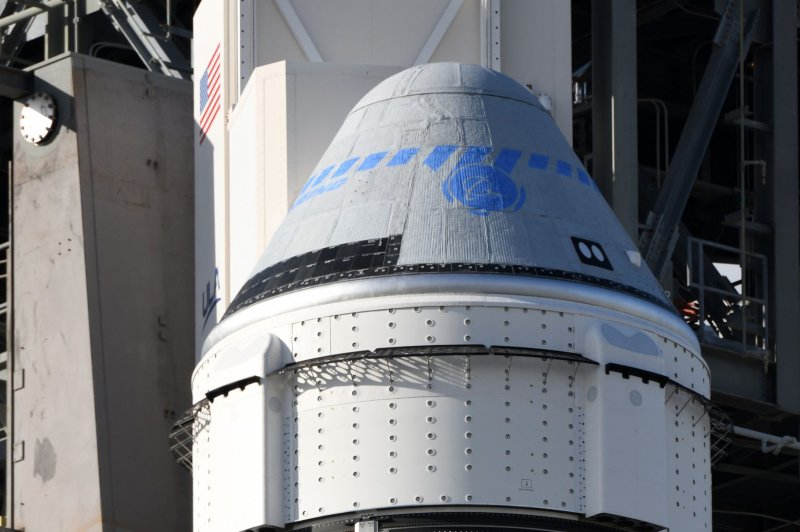The Boeing Starliner spacecraft sits on top of a United Launch Alliance Atlas V rocket on Launch Complex 41 at Cape Canaveral Air Force Station, Fla. on Dec. 19. File Photo by Joe Marino-Bill Cantrell/UPI |
License Photo
ORLANDO, Fla., July 7 (UPI) -- NASA added software experts to work with Boeing and SpaceX on their space capsule programs following the failure of Boeing's Starliner test flight in December, the agency announced via a teleconference from Florida on Wednesday.
The software oversight changes were outlined in NASA's release of its final review of the Starliner failure.
The space agency said Boeing remains on track for a second test flight in the last half of this year. Competitor SpaceX's Crew Dragon capsule successfully delivered astronauts to the International Space Station on May 31.
"Right now I cannot imagine a scenario where SpaceX is the only provider. ... We need both Boeing and SpaceX to be there for us," said Steve Stich, manager of NASA's commercial crew program.
He and NASA's Kathy Leuders, associate administrator for human exploration, acknowledged the agency might have concentrated more on SpaceX's software approach -- known as spiral software development -- because it was new to them.
"Perhaps we were a little more focused on SpaceX. We've augmented resources on both partners to make sure we're covered," Stich said.
Starliner was launched Dec. 20 without a crew, and failed to reach the International Space Station.
NASA and the company said a problem with the mission clock caused the spacecraft to burn fuel needlessly. That meant it wasn't able to reach the orbit necessary to catch up with the space station.
Boeing has acknowledged that one of its biggest problems with Starliner was a decision to break up tests of its flight software into segments, rather than run "end-to-end" tests from liftoff to docking at the station, and from undocking to landing.
NASA astronaut Douglas Hurley (C) waves to onlookers as he boards a plane at Naval Air Station Pensacola to return him and NASA astronaut Robert Behnken home to Houston a few hours after the duo landed in their SpaceX Crew Dragon Endeavour spacecraft off the coast of Pensacola, Fla,, on August 2, 2020. Photo by Bill Ingalls/NASA |
License Photo
















